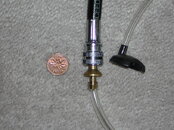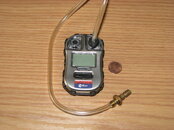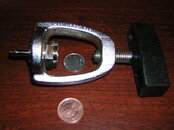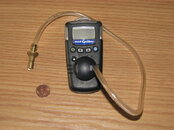swamp diver
Contributor
All I can say about PADI no longer requiring any air testing is that one should be Scared Silly. :shocked2:
Just to put this in perspective as to how bad things are in the dive industry with regards to compressed air quality I had a chat last year with one of the large accredited breathing air lab directors and asked if they could give me the the CO failure rates for dive vs. fire service compressed air. One hundred percent of the fire service air sent in was from US fire halls whereas the dive air included numerous samples from offshore tropical compressors as well as the US dive shop compressors.
The CO failure rate for diver compressed air was still about 3 percent, but for fire service air it is 0.1 percent.
Why? Because fire services generally have proper installations with adequate compressor ventilation, the compressors are newer than those in the dive industry and properly maintained, the operators are trained, there are CO monitors installed, and the compressed air is tested quarterly just "before" the cartridge is due to be changed out. In the dive industry the operators game the system by changing the filters and sampling immediately afterward with a cold compressor which is the best case scenario. Even with gaming the system the dive fill stations still have a 3 percent failure rate.
With the recession and dive shops hurting for business it is pretty clear that without the PADI quarterly testing requirement many shops will just stop testing. While quartery testing was not ideal it at least raised the level of awareness as to the potential problems and showed the diver the fill station operator was meeting some sort of minimum level of quality control.
In the current environment it is truly dive beware and one must remain air aware. It is true that most jurisdictions (except Florida) have no guidelines as to how often a recreational shop should test their air quality. Vote with your credit card and only support those shops which continue to test and show an interest in your safety. Spending $300 on a portable CO monitor is really the only sure fire way to reduce this CO risk to zero on a personal basis.
Just to put this in perspective as to how bad things are in the dive industry with regards to compressed air quality I had a chat last year with one of the large accredited breathing air lab directors and asked if they could give me the the CO failure rates for dive vs. fire service compressed air. One hundred percent of the fire service air sent in was from US fire halls whereas the dive air included numerous samples from offshore tropical compressors as well as the US dive shop compressors.
The CO failure rate for diver compressed air was still about 3 percent, but for fire service air it is 0.1 percent.
Why? Because fire services generally have proper installations with adequate compressor ventilation, the compressors are newer than those in the dive industry and properly maintained, the operators are trained, there are CO monitors installed, and the compressed air is tested quarterly just "before" the cartridge is due to be changed out. In the dive industry the operators game the system by changing the filters and sampling immediately afterward with a cold compressor which is the best case scenario. Even with gaming the system the dive fill stations still have a 3 percent failure rate.
With the recession and dive shops hurting for business it is pretty clear that without the PADI quarterly testing requirement many shops will just stop testing. While quartery testing was not ideal it at least raised the level of awareness as to the potential problems and showed the diver the fill station operator was meeting some sort of minimum level of quality control.
In the current environment it is truly dive beware and one must remain air aware. It is true that most jurisdictions (except Florida) have no guidelines as to how often a recreational shop should test their air quality. Vote with your credit card and only support those shops which continue to test and show an interest in your safety. Spending $300 on a portable CO monitor is really the only sure fire way to reduce this CO risk to zero on a personal basis.
Last edited:







